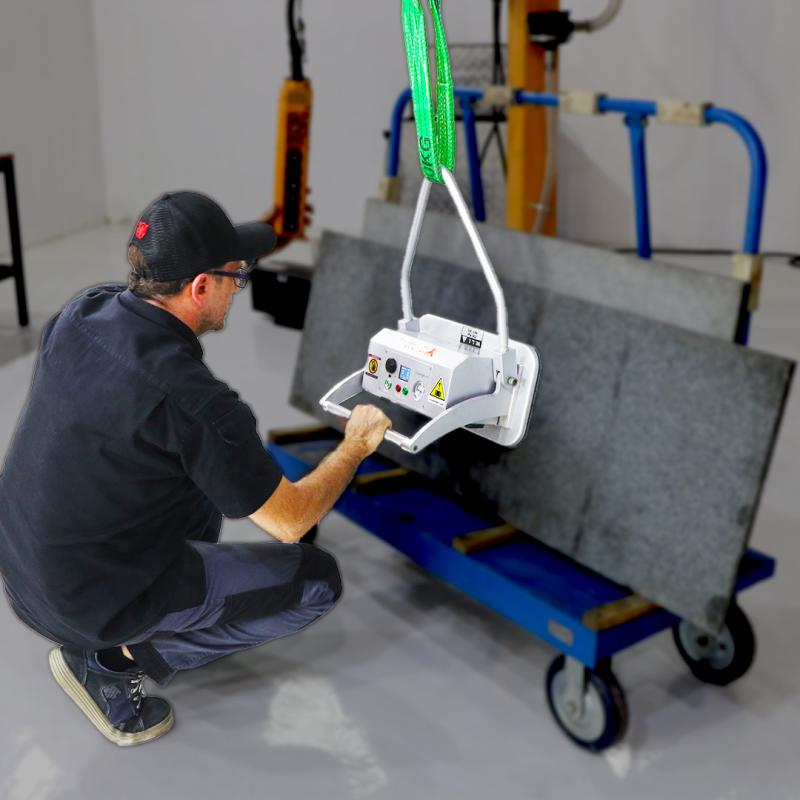



As material handling demands grow more complex—with rising e-commerce volumes, tighter delivery windows, and increasing customization—companies must invest in advanced material handling equipment and processes to stay competitive. Drawing on decades of industry expertise and informed by leading research such as The Future of Material Handling: Key Trends Transforming the Industry, this article explores the Experience, Expertise, Authoritativeness, and Trustworthiness principles that distinguish best-in-class operations, and outlines the key innovations shaping the material handling industry by 2030.
Companies with deep roots in material handling—often material handling companies that have designed and deployed solutions for decades—understand that operational excellence begins with reliable equipment and processes. From the early days of manual trolleys and hoists to today’s automated warehouses, the primary goal remains the same: safe, precise, and cost-effective handling material. Leading players continually refine their product lines, offering specialized tools such as the Electric Slab Lifter for heavy stone slabs and the scissor lifter for stone to bridge height differentials on job sites.
Proven Methodologies for Risk Reduction
Standardized training programs for forklift operators and material handlers
Rigorous maintenance schedules for lifting equipment including ratchet tie down straps provide secure load control
Integration of safety sensors and interlocks on automated guided vehicles (AGVs)
These practices are validated by industry benchmarks and regulatory frameworks, ensuring that innovation never comes at the expense of human or asset safety.
The next decade will witness transformative material handling equipment innovations driven by Industry 4.0, artificial intelligence, and advanced robotics. Organizations that invest in specialized skill development—cultivating engineers, data scientists, and automation experts—will set the pace in productivity gains and cost savings.
Autonomous Mobile Robots (AMRs) for dynamic conveyor systems
Collaborative robots (“cobots”) pairing human dexterity with machine precision
Robotic arms outfitted with adaptive vacuum lifter slab lifter end-effectors for delicate surfaces
Real-time visibility through IoT sensors and cloud-based analytics platforms enables predictive maintenance and operational intelligence. For instance:
Smart hooks that monitor load weight and angle
Warehouse digital twins simulating throughput scenarios
Dashboard KPIs for throughput rate, equipment downtime, and energy consumption
By embedding these technologies, companies demonstrate mastery over complex systems and deliver quantifiable ROI.
No organization can lead in isolation. Establishing partnerships with proven equipment manufacturers and research institutions fosters credibility and drives standards across the material handling industry.
Collaborations on standardizing gantry crane material handling protocols
Joint development programs for solutions like the Heavy-duty Forklift Boom designed to extend reach and capacity
Participation in global consortia setting best practices for Material-Handling Equipment Innovations
These alliances reinforce trust among customers, regulators, and investors by ensuring seamless integration and compliance across geographies.
Environmental and social governance (ESG) considerations are now front and center. Demonstrating Trustworthiness means delivering solutions that reduce carbon footprints, conserve resources, and uphold worker welfare.
Transition to electric and hybrid fleets to lower emissions
Lifecycle assessments for conveyors, forklifts, and scissor lifter systems
Circular economy models for component recycling
Adherence to ISO 45001 for occupational health and safety
Certification under ISO 14001 for environmental management systems
Incorporation of ergonomic design standards, from Horizontal Stone Lifting Systems to pallet jacks
By embedding sustainability throughout the value chain, industry leaders raise the bar for Material-Handling Solutions and inspire confidence among end users.
Digital Warehousing and Autonomous Systems
From automated storage and retrieval systems (AS/RS) to driverless forklifts, digital facilities minimize manual touchpoints, reduce error rates, and optimize floor space. Integrating warehouse management systems (WMS) with real-time data improves inventory accuracy and throughput.
Advanced Lifting Technologies
Innovations in end-of-arm tooling are revolutionizing load handling. Vacuum Lifter for efficient handling solutions offer gentle yet powerful grip control, vital for fragile or polished surfaces.
Modular and Portable Equipment
As distribution models become more decentralized, equipment that can be rapidly deployed and reconfigured is in high demand. Whether it’s a portable crane jib system or turnkey warehouse skids, flexibility is paramount.
Predictive Maintenance and AI
Machine-learning algorithms analyze sensor data to forecast component failures, reducing unplanned downtime. From crane wire ropes to motor windings, predictive alerts ensure timely interventions and extend asset lifespans.
Human-Machine Collaboration
Cobots enable safe, collaborative tasks—such as guided lifting with a portable jib crane—where human intuition meets robotic strength.
Enhanced Ergonomics and Worker Safety
With labor shortages intensifying, ergonomically designed tools—like lifting clamp assemblies and power-assist exoskeletons—minimize strain and injury.
Data-Driven Supply Chain Integration
From supplier portals to last-mile delivery dashboards, material flows are orchestrated across digital ecosystems, unlocking end-to-end visibility and agility.
Invest in Workforce Skills: Upskill teams on digital tools, robotics programming, and data analysis.
Adopt Scalable Platforms: Select modular systems that evolve with shifting business needs.
Prioritize Sustainability: Align equipment purchases and process designs with net-zero objectives.
Forge Collaborative Networks: Engage with research bodies, technology partners, and regulatory agencies to stay ahead of compliance and innovation curves.
By embedding these imperatives, companies can embody the standard of Material Handling excellence and remain at the forefront of the material handling industry.
As we look toward 2030, the material handling landscape will be defined by digital intelligence, sustainable practices, and human-machine synergy. Organizations that leverage their Experience, cultivate deep Expertise, build Authoritativeness through strategic partnerships, and maintain Trustworthiness via robust ESG commitments will thrive in this dynamic environment. Embracing these trends—from state-of-the-art slab lifters to modular material-handling solutions—will streamline operations and unlock new opportunities for growth and differentiation.
Babbar, T. “Future of Material Handling: Key Trends Transforming the Industry.” LinkedIn, 2025. https://www.linkedin.com/pulse/future-material-handling-key-trends-transforming-industry-babbar-tmaof
Sign up to receive the latest info on new Aardwolf products, special offers and more.
By signing up you agree to receive emails from Aardwolf with news, special offers, promotions and other information. You can unsubscribe at any time.